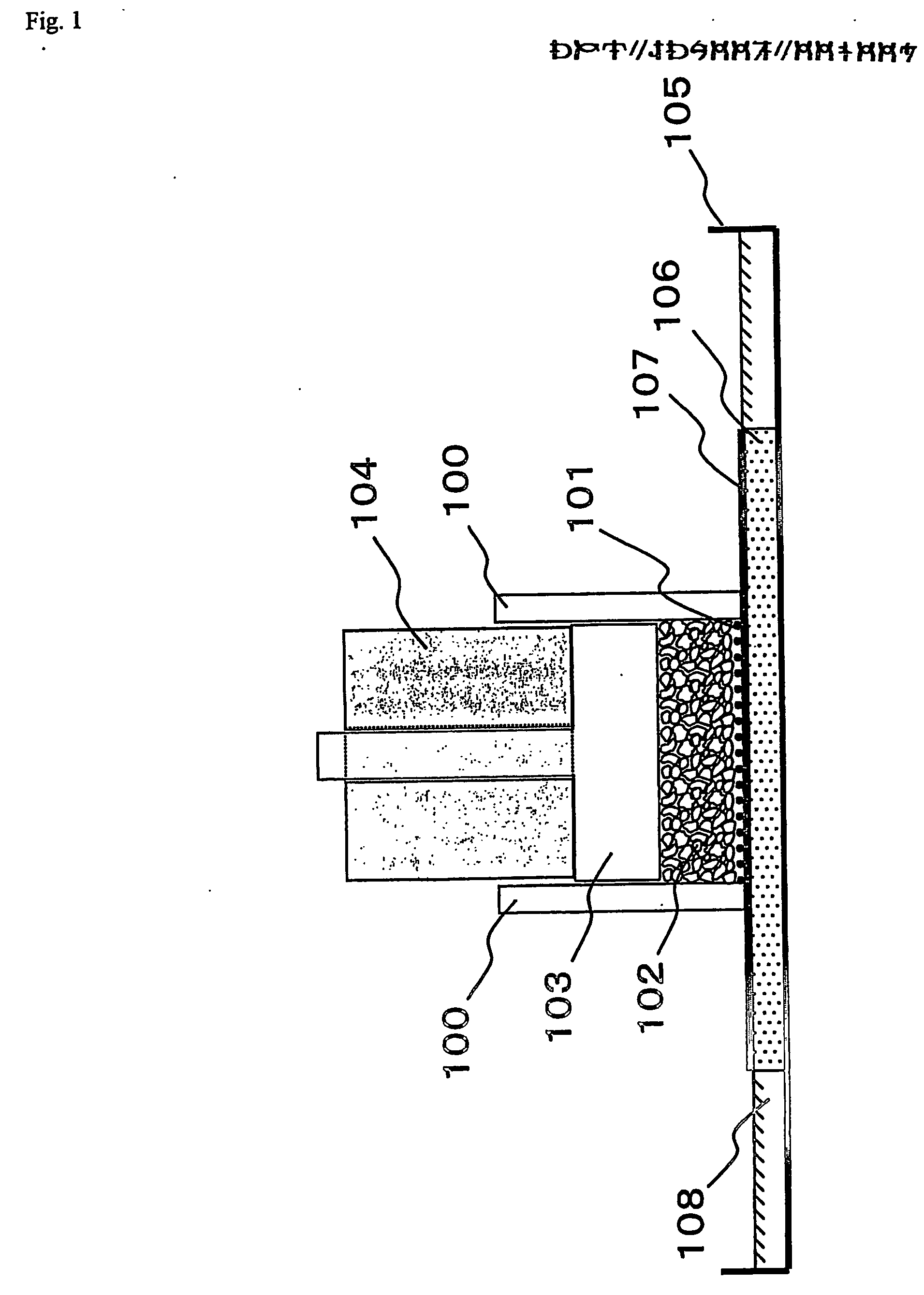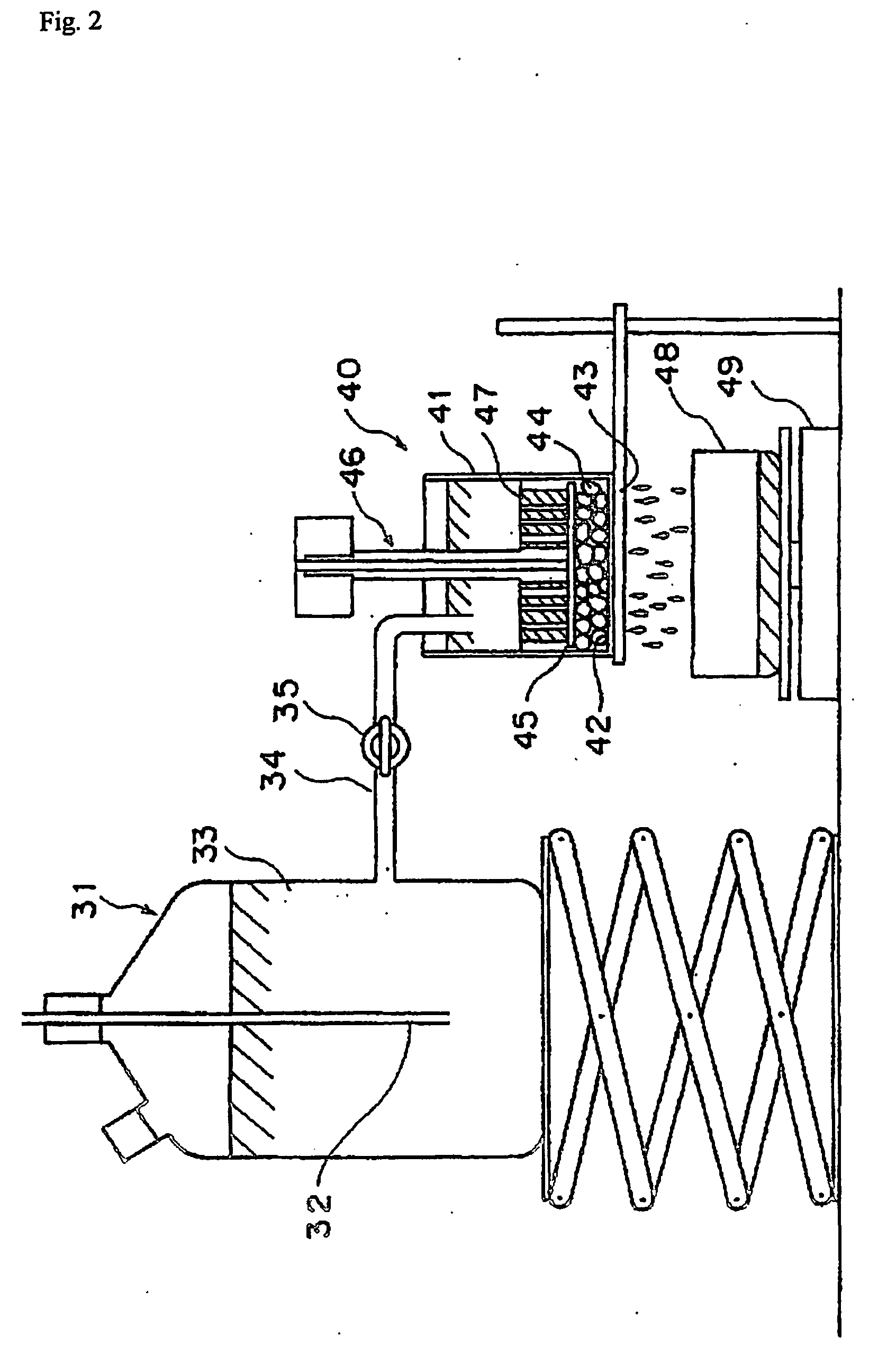Walter-absorbing agent
- Summary
- Abstract
- Description
- Claims
- Application Information
AI Technical Summary
Benefits of technology
Problems solved by technology
Method used
Image
Examples
example 1
[0264] (1) Polymerization:
[0265] In a reactor as prepared by lidding a jacketed stainless twin-arm kneader of 10 liters in capacity having two sigma-type blades, there was prepared a reaction liquid by dissolving 9.36 g (0.08 mol %) of polyethylene glycol diacrylate into 5,438 g of aqueous solution of sodium acrylate having a neutralization degree of 71.3 mol % (monomer concentration: 39 mass % / ). Next, this reaction liquid was deaerated under an atmosphere of nitrogen gas for 30 minutes. Subsequently, 29.34 g of 10 mass % aqueous sodium persulfate solution and 24.45 g of 0.1 mass % aqueous L-ascorbic acid solution were added thereto under stirred conditions. As a result, polymerization started after about 1 minute. Then, the polymerization was carried out in the range of 20 to 95° C. while the forming gel was pulverized. Then, the resultant crosslinked hydrogel polymer (1) was taken out after 30 minutes from the start of the polymerization.
[0266] The crosslinked hydrogel polymer ...
example 2
[0276] An amount of 100 g of the water-absorbent resin particles (B1A10) as obtained from Example 1 were mixed with a surface-treating agent comprising a mixed liquid of 0.5 g of 1,4-butanediol, 1.0 g of propylene glycol, and 4.0 g of pure water, and then the resultant mixture was heat-treated at 210° C. for 25 minutes. Furthermore, the resultant particles were disintegrated to such a degree that they could pass through a JIS standard sieve having a mesh opening size of 600 μm. As a result, surface-crosslink-treated water-absorbent resin particles (C1-2A10) were obtained. The water-absorbent resin particles (C1-2A10) displayed a CRC of 28.0 g / g, an SFC of 60 (10−7·cm3·s·g−1), and a CSF of 24.0 g / g.
[0277] Next, 100 mass parts of the water-absorbent resin particles (C1-2A10) were uniformly mixed with 0.3 mass part of Reolosil QS-20 (hydrophilic amorphous silica produced by Tokuyama Corporation), thus obtaining a water-absorbing agent (D1-2A10). The resultant water-absorbing agent (D1...
example 3
[0278] An amount of 100 g of the water-absorbent resin particles (B1A10) as obtained from Example 1 were mixed with a surface-treating agent comprising a mixed liquid of 2.0 g of propylene glycol and 4.0 g of pure water, and then the resultant mixture was heat-treated at 215° C. for 30 minutes. Furthermore, the resultant particles were disintegrated to such a degree that they could pass through a JIS standard sieve having a mesh opening size of 600 μm. As a result, surface-crosslink-treated water-absorbent resin particles (C1-3A10) were obtained. The water-absorbent resin particles (C1-3A10) displayed a CRC of 27.5 g / g, an SFC of 66 (10−7·cm3·s·g−1), and a CSF of 23.8 g / g.
[0279] Next, 100 mass parts of the water-absorbent resin particles (C1-3A10) were uniformly mixed with 0.3 mass part of Reolosil QS-20 (hydrophilic amorphous silica produced by Tokuyama Corporation), thus obtaining a water-absorbing agent (D1-3A10). The resultant water-absorbing agent (D1-3A10) was also of the sha...
PUM
| Property | Measurement | Unit |
|---|---|---|
| Length | aaaaa | aaaaa |
| Percent by mass | aaaaa | aaaaa |
| Percent by mass | aaaaa | aaaaa |
Abstract
Description
Claims
Application Information
 Login to View More
Login to View More - R&D
- Intellectual Property
- Life Sciences
- Materials
- Tech Scout
- Unparalleled Data Quality
- Higher Quality Content
- 60% Fewer Hallucinations
Browse by: Latest US Patents, China's latest patents, Technical Efficacy Thesaurus, Application Domain, Technology Topic, Popular Technical Reports.
© 2025 PatSnap. All rights reserved.Legal|Privacy policy|Modern Slavery Act Transparency Statement|Sitemap|About US| Contact US: help@patsnap.com



